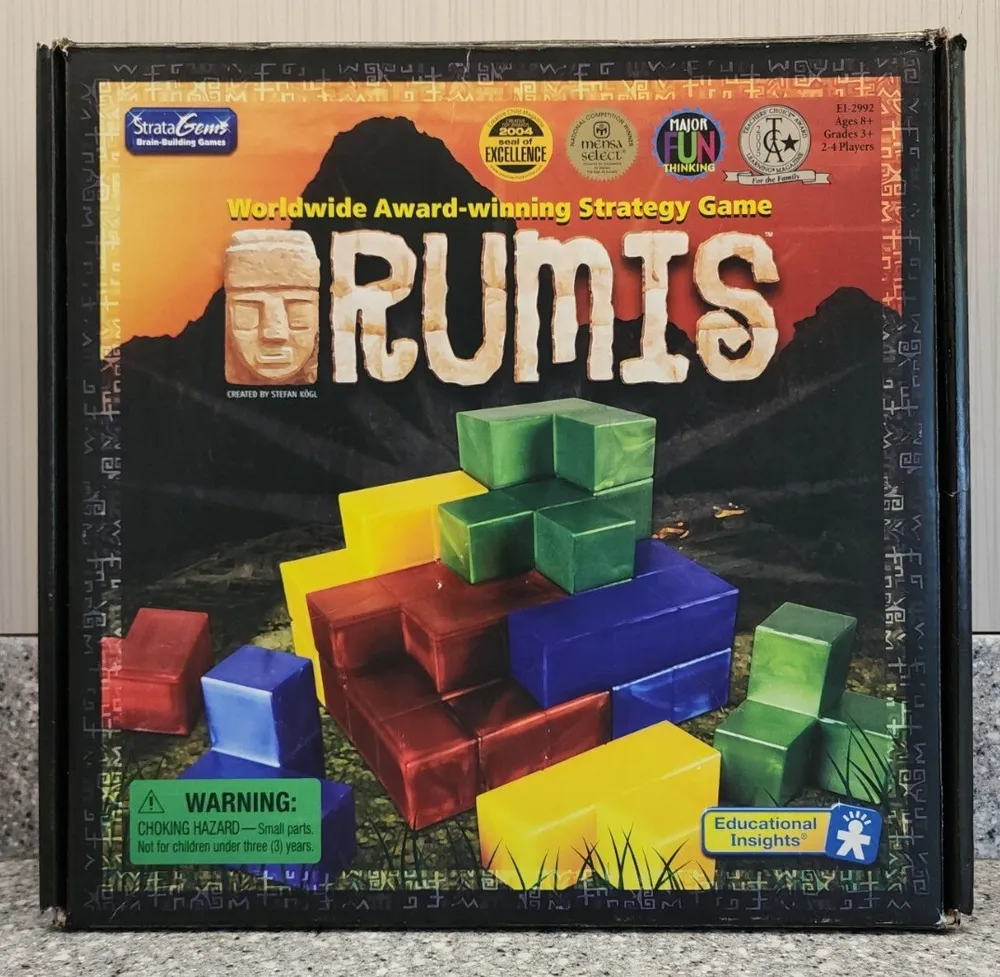Blokus 3D (2003)
Rumis is a board game designed for 2 to 4 players, developed by Stefan Kögl and published by Sekkoia, Educational Insights, Murmel Spielwerkstatt und Verlag, and Alary Games. The game is popular and significant due to its simple yet strategic gameplay, which allows players to develop spatial visualization skills and engage in optimal placement of blocks of various shapes within a confined space. The theme and artwork of the game are inspired by Inca architecture.
Game Components of Blokus 3D
How To Setup Blokus 3D
To set up Blokus 3D, players start by selecting a blueprint or mask that defines the structure they will build. Each player chooses a color and receives 11 blocks. The first player places one of their blocks within the confines of the structure, ensuring it touches the board or another block. Subsequent players then place their blocks in a similar manner.
Gameplay Mechanics and Game Objective
Player Experience
Blokus 3D is a game that challenges spatial thinking, planning, and decision-making. It is relatively quick to play, lasting about 15-20 minutes, and is suitable for families and players of all ages. The game’s simplicity makes it easy to learn and teach, but it still offers ample mental stimulation. However, the game’s strategic depth is somewhat limited compared to other Blokus games due to the fewer options available.
Pros
Cons
Personal Thoughts on Blokus 3D
Blokus 3D is ideal for those who enjoy abstract puzzle games and are looking for a quick, mentally stimulating experience. It is great for families and children due to its educational value and ease of play. However, players seeking complex strategies or intense competitive interaction might find it less engaging. Overall, Blokus 3D is a fun and challenging game that fills a unique niche in the world of board games.
We are supported by our audience. When you purchase through links on our site, we may earn an affiliate commission, at no extra cost for you. Learn more.

